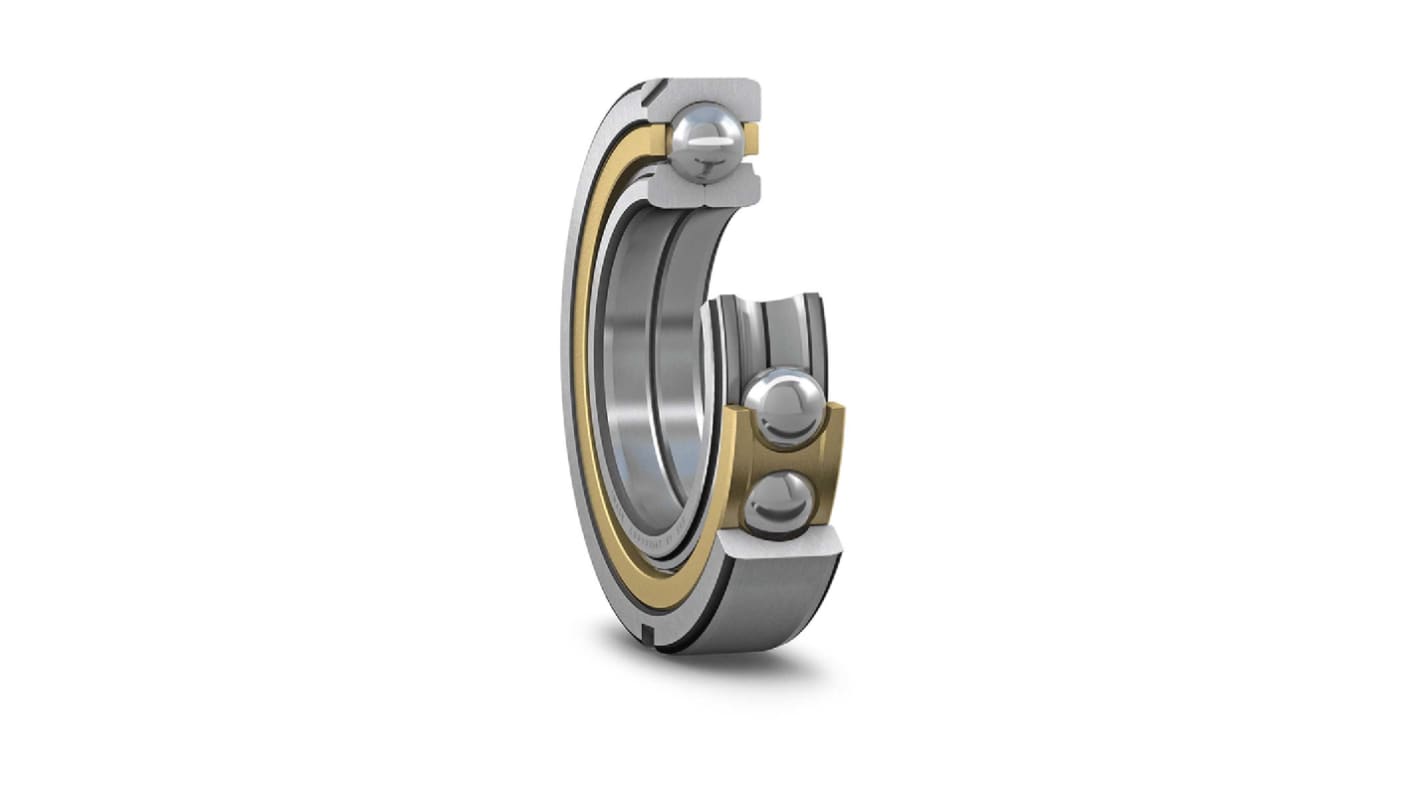SKF QJ 228 N2MA 1 Row Ball Bearing - 140 mm ID, 250 mm OD 42 mm Race Width
- RS Stock No.:
- 208-0405
- Mfr. Part No.:
- QJ 228 N2MA
- Brand:
- SKF

Subtotal (1 unit)*
£1,661.94
(exc. VAT)
£1,994.33
(inc. VAT)
FREE delivery for orders over £50.00
Temporarily out of stock
- Shipping from 02 February 2026
Need more? Click ‘Check delivery dates’ to find extra stock and lead times.
Units | Per unit |
|---|---|
| 1 + | £1,661.94 |
*price indicative
- RS Stock No.:
- 208-0405
- Mfr. Part No.:
- QJ 228 N2MA
- Brand:
- SKF
Specifications
Technical Reference
Legislation and Compliance
Product Details
Find similar products by selecting one or more attributes.
Select all | Attribute | Value |
|---|---|---|
| Brand | SKF | |
| Inside Diameter | 140 mm | |
| Product Type | Ball Bearing | |
| Outside Diameter | 250 mm | |
| Race Width | 42mm | |
| Cage Material | Machined Metal | |
| Ball Material | Steel | |
| End Type | Open | |
| Number of Rows | 1 | |
| Internal Clearance | C0 | |
| Contact Angle | 35° | |
| Static Load Rating | 475kN | |
| Dynamic Load Rating | 345kN | |
| Standards/Approvals | No | |
| Series | QJ | |
| Bore Type | Parallel | |
| Limiting Speed | 4300rpm | |
| Bearing Type | Single Row Angular Contact Ball | |
| Select all | ||
|---|---|---|
Brand SKF | ||
Inside Diameter 140 mm | ||
Product Type Ball Bearing | ||
Outside Diameter 250 mm | ||
Race Width 42mm | ||
Cage Material Machined Metal | ||
Ball Material Steel | ||
End Type Open | ||
Number of Rows 1 | ||
Internal Clearance C0 | ||
Contact Angle 35° | ||
Static Load Rating 475kN | ||
Dynamic Load Rating 345kN | ||
Standards/Approvals No | ||
Series QJ | ||
Bore Type Parallel | ||
Limiting Speed 4300rpm | ||
Bearing Type Single Row Angular Contact Ball | ||
- COO (Country of Origin):
- DE
SKF Machined Brass Cage Angular Contact Ball Bearing - QJ 228 N2MA
Did you know that angular contact ball bearings are a type of radial ball bearing that can accommodate combined axial loads and radial loads? This comes in very handy for pumps, motors and machine handling applications. SKF's QJ 228 N2MA bearing features two locating notches in one outer ring, it has a bore diameter of 140 mm, an outside diameter of 250 mm and a width of 42 mm.
Features & Benefits
• Angular contact ball bearings feature raceways on their inner and outer rings races. These rings are offset to one another
• Angular contact ball bearings can only accept thrust loads in one direction
• Outer ring centred
• Features a basic dynamic load rating of 345 kN and a basic static load rating of 475 kN whilst the fatigue load limit is 14.3 kN
• Popular bearing type among the ball bearings offered to you from SKF
How does an Angular Contact Ball Bearing work?
The axial load carrying capacity of angular contact ball bearings increases as the contact angle increases. The contact angle is defined as the angle between the line joining the points of contact of the ball and the raceways in the radial plane, along which the combined load is transmitted from one raceway to another, and a line perpendicular to the bearing axis
Related links
- SKF 7228 BCBM 1 Row Ball Bearing - 140 mm ID, 250 mm OD 42 mm Race Width
- SKF QJ 328 N2MA 1 Row Ball Bearing - 140 mm ID, 300 mm OD 62 mm Race Width
- SKF QJ 328 N2MA/C3 1 Row Ball Bearing - 140 mm ID, 300 mm OD 62 mm Race Width
- SKF 7414 BCBM 1 Row Angular Contact Ball Bearing - 70 mm ID, 180 mm OD 42 mm Race Width
- SKF QJ 332 N2MA 1 Row Ball Bearing - 160 mm ID, 340 mm OD 68 mm Race Width
- SKF QJ 318 N2MA 1 Row Ball Bearing - 90 mm ID, 190 mm OD 43 mm Race Width
- SKF QJ 315 N2MA 1 Row Ball Bearing - 75 mm ID, 160 mm OD 37 mm Race Width
- SKF QJ 214 N2MA 1 Row Ball Bearing - 70 mm ID, 125 mm OD 24 mm Race Width


